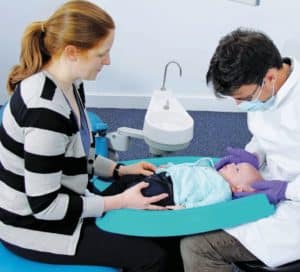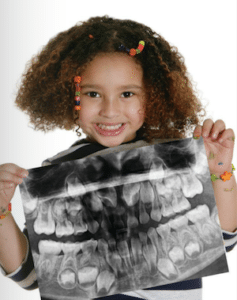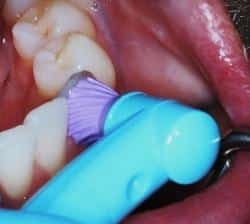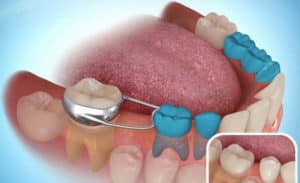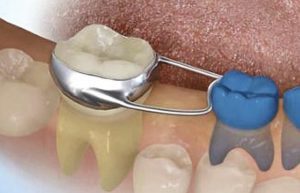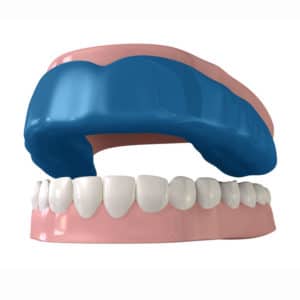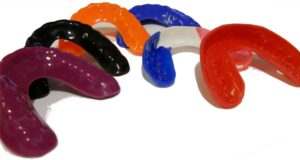Your child brushes his or her teeth twice a day, flosses regularly, and visits the dentist every six months. But did you know that rinsing with fluoride – a mineral that helps prevent cavities and tooth decay – also helps keep those teeth healthy and strong?
Fluoride is effective in preventing cavities and tooth decay by coating teeth and preventing plaque from building up and hardening on the tooth’s surface.
Fluoride comes in two varieties, systemic and topical:
- Systemic fluoride is ingested, usually through a public water supply. While teeth are forming under the gums, the fluoride strengthens tooth enamel, which makes it stronger and more resistant to cavities.
- Fluoride can also be applied topically to help prevent caries (cavities) on teeth present in the mouth. It is delivered through toothpaste, mouthwash, and professional fluoride applications. Professional application of topical fluoride foam and varnishes is also a valuable tool in cavity prevention.
Receiving a fluoride treatment from your dentist
A fluoride treatment in our office takes just a few minutes. After the treatment, patients may be asked not to rinse, eat, or drink for at least 30 minutes in order to allow the teeth to absorb the fluoride.
Depending on your child’s oral health or Dr. Iyer’s recommendation, your son or daughter may be required to have a fluoride treatment every three, six, or 12 months. The doctor may also prescribe at-home fluoride products such as mouthwash, gels, or antibacterial rinses.
How to choose the right fluoride treatment
When choosing an at-home fluoride product (such as toothpaste or mouthwash), always check for the American Dental Association’s (ADA) seal of acceptance. Products marked with the ADA seal of approval have been carefully examined and approved by the ADA based on safety and effectiveness.


